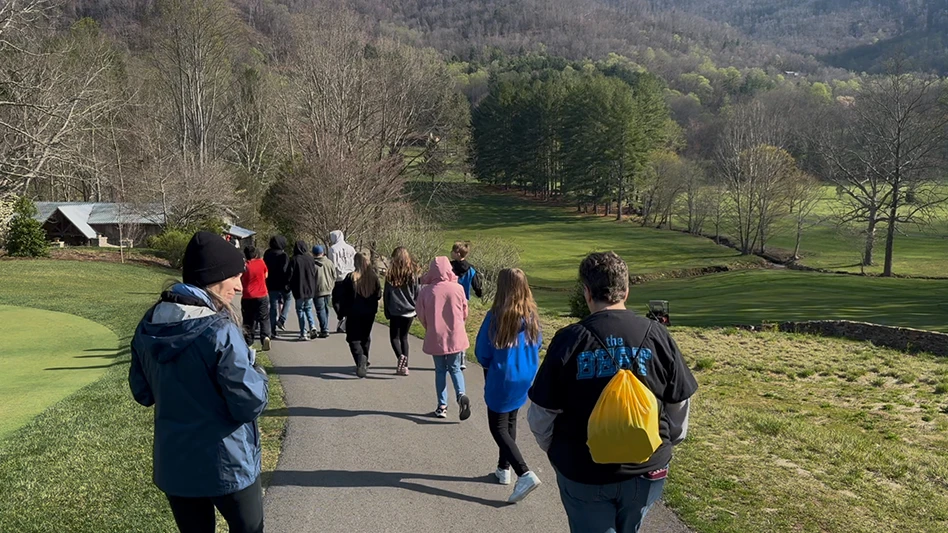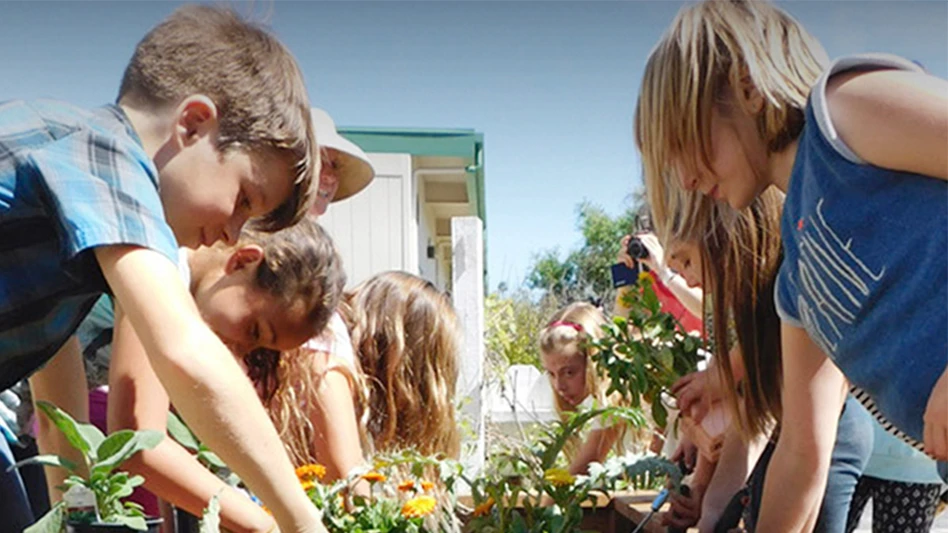 What kind of a winter did you have? Are you in an area that received record cold? How long was your course covered with snow and/or ice? How is the turf going to respond as the weather warms up? Is disease pressure going to be higher than usual? We asked people around the country these and related questions. The nearly universal answer was, “It depends.” When asked what superintendents should be doing to prevent potential problems, the most common paraphrased responses were, “Don’t rush things.” “Be patient.” “Don’t pay attention to the calendar, watch the weather, soil temperatures and how your turf is responding. Then act accordingly.”
What kind of a winter did you have? Are you in an area that received record cold? How long was your course covered with snow and/or ice? How is the turf going to respond as the weather warms up? Is disease pressure going to be higher than usual? We asked people around the country these and related questions. The nearly universal answer was, “It depends.” When asked what superintendents should be doing to prevent potential problems, the most common paraphrased responses were, “Don’t rush things.” “Be patient.” “Don’t pay attention to the calendar, watch the weather, soil temperatures and how your turf is responding. Then act accordingly.”
Snow mold is probably the first thing that comes to mind for those areas that experienced excessive snow cover. Jim Skorulski, senior agronomist with the USGA office in Massachusetts, says, “We are anticipating heavier than usual snow mold pressure due to the persistent snow cover this winter.” Massachusetts was one of the northeastern states that still had most of the ground covered with snow on the first full day of spring.
Darin Bevard, director, Mid-Atlantic Green Section, USGA from the Pennsylvania office, says, “Overall, what we have seen has been positive. Disease pressure has primarily been from pink snow mold (Microdochium nivale) with a little gray snow mold (Typhula incarnate and T. ishikariensis) here and there.” Dr. Lee Miller, extension turfgrass pathologist, University of Missouri, reported finding pink snow mold in central Missouri on March 14 after a big snowmelt.
Dr. Joe Vargas, professor of botany and plant pathology at Michigan State University, is more concerned about the potential damage from the ice cover. Greens in parts of Michigan were covered with ice for over 60 days. While snow provides a blanket that protects the turf from desiccation, ice smothers the turf. Toxic gases build up under the ice and suffocate the crown. Vargas says, “Another problem that occurs is when the ice and snow melts and then refreezes. The crowns are crushed by the formation of the ice.” Vargas also says, “The longer the ice and snow holds on, the less time there is for the grass to rejuvenate before people want to play on it.”
Desiccation is another problem that superintendents may have to deal with this spring. Desiccation occurs when the amount of water lost by foliage exceeds that picked up by the roots. Miller says, “During a cold winter, uptake of water by turfgrass roots is minimal due to dormancy, yet high wind and low dew points can continue to suck water out of the foliage.” He reports, “We had sustained periods of both in Missouri this past January and we may be seeing damage from that time frame when insulating snow cover was not present.”
Dan Maddox, superintendent at Oak Hills Country Club in Omaha, Neb., which had practically no snow cover most of the winter, reports his biggest concern is desiccation and the onset of warm weather too quickly.
|
Lessons learned What have we learned from this and other tough winters? “Mother Nature is always in charge, and sometimes we try to do everything right and wind up being wrong.” Says Darin Bevard, director, Mid-Atlantic Green Section, USGA from the Pennsylvania office. “When the weather goes against you, there isn’t much you can do.” Jim Skorulski, senior agronomist with the USGA office in Massachusetts says, “Some portion of the NE region will experience some difficult winter weather and cold temperature injury on a fairly regular basis. This year’s winter weather is more extreme or seems to be impacting a much wider portion of the region and country. There have been records broken for cold temperature and for snowfall totals in many areas, and winter seems to be holding on hard.” He adds, “Mother Nature is boss. She flexed some muscle to let us know that.” “Learn that what we do throughout the year will have an impact on what happens when the turf is dormant,” says Carmen Magro, CGCS, MBA, professional agronomist and vice president, business development for Stevens Water Monitoring Services. “The turf system’s performance level is highly dependent on what we do throughout the year, from year to year. It is why tournament courses begin to prepare for major tournaments years in advance.” Magro adds, “We can only achieve great success by learning to manage all the things that are manageable to the best of our ability…these include soil management, irrigation management and nutritional management in no particular order, but of equal importance.” |
“Because the winter was so open and we had record cold, I am finding frost much deeper than usual and it is hanging on later,” Maddox says. “It is going to be a while before I can charge my irrigation system, but the turf could use some water.”
What should you do? Patience and observation were the common suggestions by respondents to our questions. A University of Nebraska newsletter published on February 14 had several suggestions for assessing winterkill. The key suggestion was to bring grass samples inside and force them to green-up. This gives the superintendent a much better idea of what to expect when the turf in the field warms up. The more time you have to prepare, the better chance you have of making sound decisions.
Maddox says he followed these recommendations. “I was pleasantly surprised in some areas, the grass is greening up fine,” he says. “In other areas, I know the turf didn’t survive and I can map out my re-grassing program.”
Vargas expects some of the greens in Michigan that were covered with ice for extended periods will have to be resodded. Bringing samples in for testing will confirm or refute that necessity.
Bevard says patience is the key element in helping the recuperating process.
“We cannot make the grass grow if we don’t have proper environmental conditions,” he says.
The process is dependent on weather conditions, Skorulski says. It requires warmer temperatures to dry things out and warm up the soils.
“I recommend charging the irrigation systems as soon as possible,” Skorulski says. “I expect the turf to be weak so it will be vulnerable to desiccation.” UMass Turf Extension recommends raking to relieve matted turf after the stand dries to speed recovery. They go on to state overseeding may be warranted in severe instances.
Patience is also a key offered by Carmen Magro, CGCS, MBA, professional agronomist and vice president, business development for Stevens Water Monitoring Services.
“Once it [the grass] gets going, there will be no stopping it,” Magro says. “It will surely depend on how well the superintendent addresses the turf’s needs as it breaks dormancy, and it will also depend on the practices put in place prior to dormancy.
“If the turf survived the ice/snow damage in the North, then it will green up perfectly if we allow it to transition properly,” Magro adds. “If we are delayed in the south by extended cooler temperatures, then the cool season grasses (or painted warm season turf) will hang around a little longer than usual, but be assured once the soils begin to warm ever so slightly, the deep green turf will be on us quickly.”
As soon as the grass can be vented or allowed to be exposed to sun and air, do it, Magro says. Do not aerify the turf too soon. Gradually, over a period of 7-10 days of sun and warmth exposure, mow off the dead material and begin your nutritional and IPM management program. “Focus on the fundamental needs of the turf…stimulate growth down through the roots, manage the soil/moisture relationships, air out the turf any way possible to get the gas exchange moving well,” he says. “Only in the case where there are active fungi growing and thriving would I make a fungicide application my first priority.”
Do not be over aggressive with maintenance practices when the grass isn’t growing, Bevard says. Also, monitor the weather and grass closely. “It may be possible to skip fungicide applications to control a disease such as Microdochium patch if, for example, the weather is going to turn dry, warm and sunny,” Bevard says. “The disease will no longer be active under these conditions.”
If you find out that you have experienced winterkill in certain areas, you’ll need to determine your next course of action.
There are a number of factors to take into consideration. Depending on the size and location of the areas you have the option of seeding or sodding.
Budget also certainly comes into play here. Availability of the preferred sod is also a question.
If seeding you need to decide what seed to use. Will the seed that matches the primary stand in the affected areas germinate in time to be effective?
If not, what can you use that will establish itself quick enough but not contaminate your stand? What kind of combination can you use that will provide maximum results? What can be done to speed up the germination process?
If any kind of pre- or post-emergent weed control is needed, how do you time it with seeding for optimum control and seed establishment? How do you need to adjust your fertility program?
 Keep in mind that the seedlings will not develop a good root system for some time so low rates of fertilizer applied more frequently will be more effective. You will also need to water the seeded areas more frequently until the plants become established. Mow as soon as the first seedlings reach the mowing height for the area.
Keep in mind that the seedlings will not develop a good root system for some time so low rates of fertilizer applied more frequently will be more effective. You will also need to water the seeded areas more frequently until the plants become established. Mow as soon as the first seedlings reach the mowing height for the area.
To encourage the seedlings to spread mow early and frequently. If hot and humid weather is in the forecast, you may need to apply a fungicide to prevent damping off, Pythium, and/or brown patch.
Last, but certainly not least, manage moisture and salts together on a regular basis.
“Monitoring those is simple with today’s technology,” Magro says. “Monitoring will prevent leaching of nutrients from the turf, allow for the most air exchange to take place, allow for the most extensive rooting to take place and simply help to setup the turf to withstand this year’s stress and future stresses yet to be encountered.”
Steve Trusty is a Council Bluffs, Iowa, based writer and frequent GCI contributor.

Explore the April 2014 Issue
Check out more from this issue and find your next story to read.
Latest from Golf Course Industry
- From the publisher’s pen: Watery dilemma
- The Aquatrols Company hires marketing manager
- Renovating Bredemus in West Texas
- Renovation starts at Okatie Creek GC at Sun City Hilton Head
- The Fittest Podcast in Turf: Episode 1
- New 6-hole course debuts in Oklahoma
- GCSAA announces Grassroots Ambassador Leadership Award recipients
- Reel Turf Techs: David Gummo







